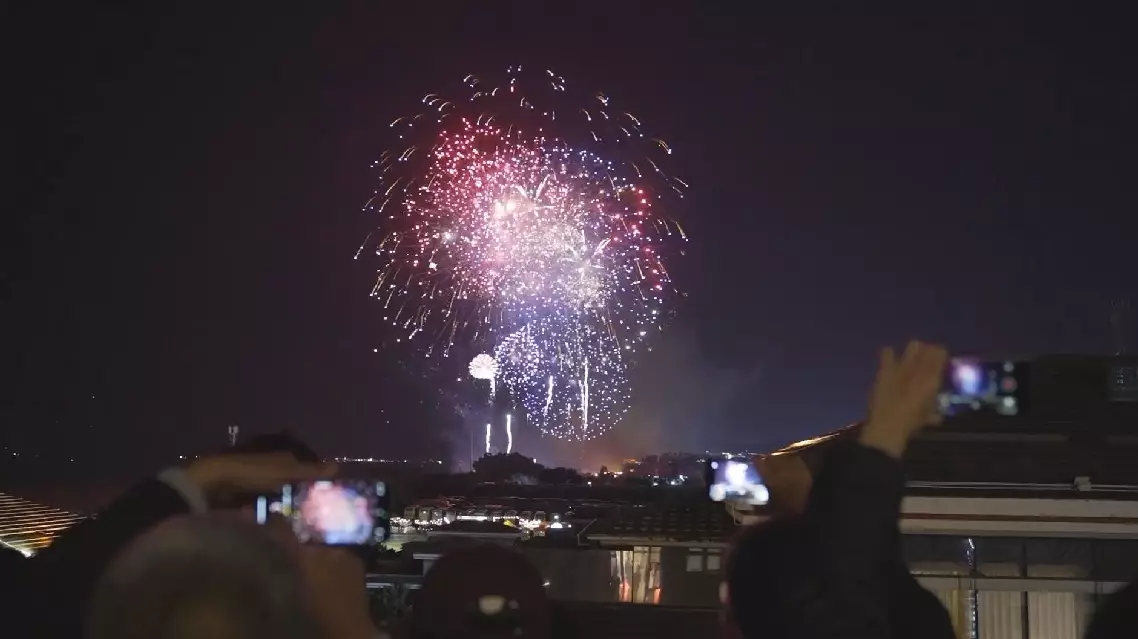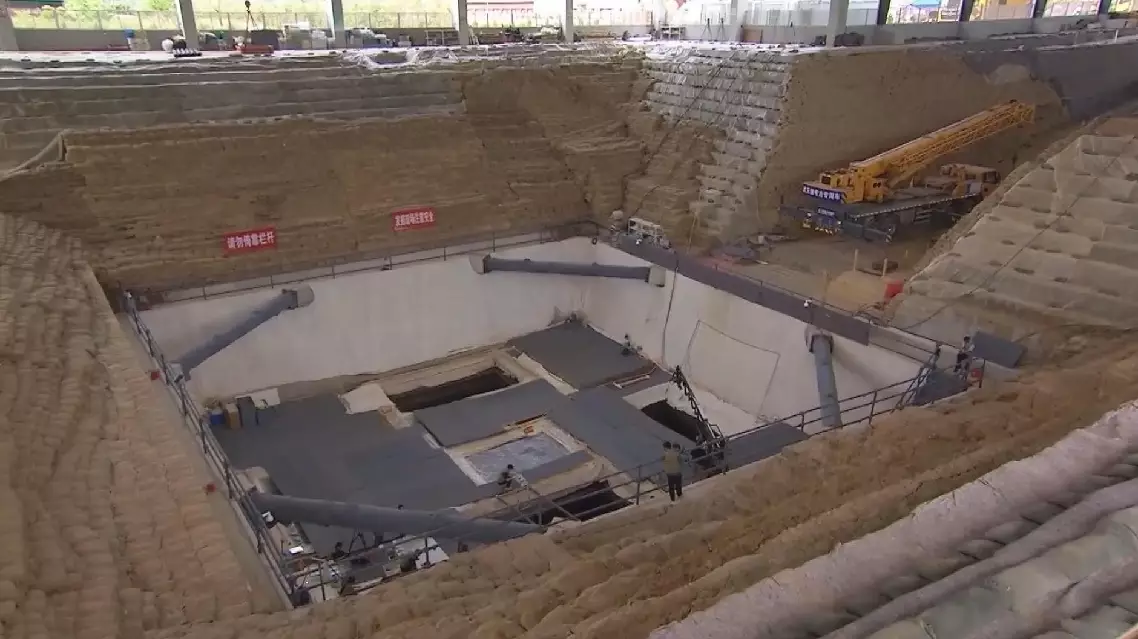A cross-Strait fireworks display was held jointly in Xiamen, a coastal city in east China's Fujian Province, and Kinmen on Wednesday, also the first day of the Chinese New Year, as both sides celebrated the grand festival.
Spring Festival, which marks the start of a new year, is the biggest annual holiday for the Chinese people.
Starting at 20:00, nearly 50,000 colorful fireworks were launched simultaneously from both Xiamen and Kinmen, soaring into the sky and bursting in vibrant displays that illuminated the night.
The 30-minute fireworks show attracted visitors to immerse themselves in the joyful festive atmosphere and extend New Year greetings to each together.
"I think this year's fireworks show is grander than in previous years. It was truly fantastic. People from both sides of the Strait are one family. I wish everyone a happy New Year," said Hong Tzu-i, a Taiwan resident living in Xiamen.
"The people on both sides of the Strait are members of the same family whose blood runs thicker than water. I feel extremely happy and moved to welcome the Chinese New Year with my friends from Xiamen," said Chang Yu-chi, a Taiwan resident working in Xiamen.
"We will always be one family. I hope everyone will enjoy a happy, healthy, harmonious, and prosperous New Year," said Ye Mengli, a Xiamen resident.
The joint fireworks display, held on the first day of Chinese New Year each year since 1987, has become a cherished tradition, underscoring the deep bonds between the mainland and Taiwan.
Xiamen and Kinmen, less than two kilometers apart at their closest point, have now become a hub for cross-Strait exchanges.
In 2001, an initiative was launched to allow for direct trade, postal services, and transportation between the mainland and Kinmen and Matsu islands.
In 2024, the Xiamen-Kinmen passenger ferry route under the initiative saw an 81 percent year-on-year increase in passenger traffic, with total inbound and outbound travelers exceeding 1 million - over 90 percent of whom were Taiwan residents.

Cross-Strait fireworks show lights up night sky, celebrating Chinese New Year
The top six archaeological findings across China in 2024 were announced at Wednesday's annual archaeology forum hosted by the Chinese Academy of Social Sciences.
The discoveries, covering from the Paleolithic Age to the Yuan (1271-1368), Ming (1368-1644), and Qing Dynasties (1636-1912), shed light on studies on the history and culture of ancient China.
The earliest of the six, the Dadong Site, is located in Jilin Province in northeast China. Discovered in the strata dating from 28,000 to 24,000 years ago, the site involves an artificial stone circle, which should be the remains of a primary shed of ancient humans, implying the archaeological importance of the Changbai Mountain area in the field of evolutionary anthropology studies.
The Xiatang Site in east China's Zhejiang Province, a Neolithic Age settlement site, reveals the structure and layout of the ancient village, providing new evidence for the study of the social structure of early-stage agricultural societies.
At the Siwa Site, another Neolithic Age site in northwest China's Gansu Province, the first prehistory large-scale near square-shaped moat was discovered, which might hint at the origin of the square-walled cities in China.
The Zhouyuan Site in Shaanxi Province of northwest China shows evidence of China's earliest dynasties, providing written materials for studying the history of Western Zhou Dynasty (about 1046 – 771 BC). With over 200 bone and tortoise shell pieces for divination rites being found, phrases totaling over 180 oracle scripts were recognized, covering documentations of astronomy, calendar, history, and geology.
At a Warring States period site in east China's Anhui Province, the Wuwangdun Site, researchers excavated over 10,000 pieces of cultural relics, including multiple Ding sets, or special cauldron sets, the representative ritual vessels that have long been used to represent social class and nobility, and symbols of China's traditional rites and ethnicity.
In east China's Jiangxi Province, the archaeological site of Jingdezhen City, the world-famous town of porcelain with a thousand-year history, welcomed new discoveries. The latest discoveries at the Jingdezhen Site revealed the sources of materials and fuels that supported the large-scale porcelain production, as well as the local traffic net in the Yuan, Ming, and Qing Dynasties, giving people a perception to understand Jingdezhen's development history.
"These discoveries are not only about gathering ancient relics in the fields, but, more importantly, about their value for academic research. Every single result complements our understanding of Chinese history and culture," said Shi Jinsong, the deputy head of the Institute of Archaeology at the Chinese Academy of Social Science.

China unveils top archaeological findings of 2024





















































